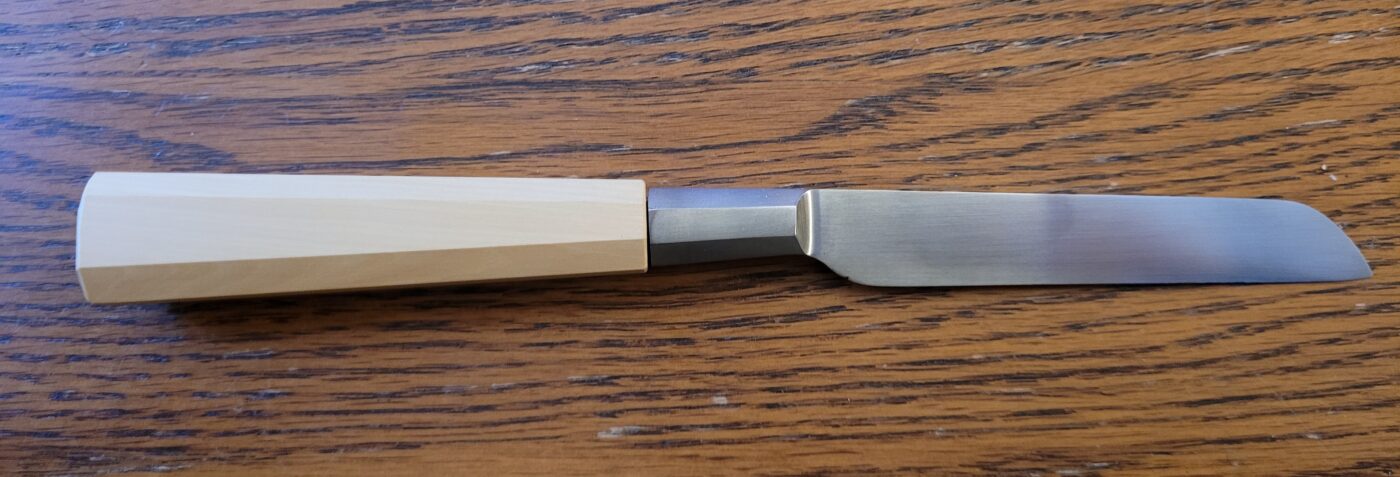Greetings. My name is Nathan Hartman, and I am a bladesmith. Up to this point in the progression of my art I have focused primarily on blades of forge welded wrought iron and steel construction. However, for this project I elected to go in an entirely different direction. I wanted to forge a late period knife, which is outside my normal interest. But also, I wanted to produce a 1:1 reproduction of an extant artifact blade. Up to now I have made many blades “based on” or “styled after” original pieces, but I have never intentionally set out to create an exact replica. It was also my intent to utilize only hand tools throughout, and period techniques where possible.
The artifact blade I selected is found in the Queenhithe Collection in London, England, and is dated to the latter half of the 16th century. The blade has a straight cutting edge, a faceted integral bolster, and a snort stubby tang typical of knives of this type and time. The handle has either fallen off or rotted away long since.
I hand forged the blade, bolster, and tang to the correct measurements from a bar of high carbon steel. Once I finished forging the blade, I took it to my workbench and finished shaping it by hand with files and stones. A time-consuming process to say the least. After the entire blade was shaped, and the surface of the steel was at a smooth consistent finish it was hardened and tempered in the forge. After some more cleanup of the steel with the stones, I selected a piece of English Box for the handle. The handle was shaped with files and wood rasps. The blade was glued into the handle using pine resin.
I hope you enjoy the finished product as much as I enjoyed the making of it.

Beautiful blade! I really appreciated your detailed documentation: while I have some familiarity with metalworking (my hubby’s a blacksmith, & I’ve learned a lot from him), I feel like your descriptions of the process would help those with less knowledge about the topic understand what you did and why you did it that way. The historical context is helpful to have, too. Great work all around, and I admire your tenacity with sticking to using hand tools when it takes 10 times as long as the power tools would.
Thank you for your kind words 🙂
This is a very handsome knife, accompanied by your detailed description and historic notes. I have no experience with metalworking, so I learned much from reading your documentation — thank you! I look forward to seeing the knife at your exhibit.
Thank you! I’m glad you enjoyed my documentation. I’ll look forward to chatting next weekend 🙂
This is beautiful! The amount of work that went into this is staggering. Your documentation is very evocative and inspiring. I can’t wait to see your knife in real life. Thank you so much!!
This is a wonderful piece!